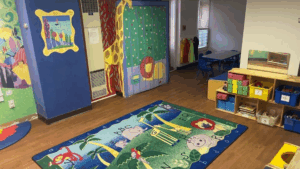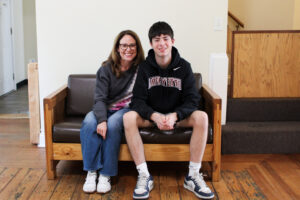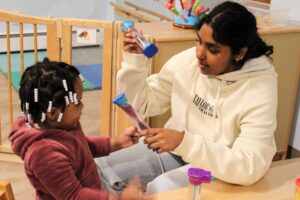TIP SHEET: GROSS MOTOR ACTIVITIES
- by hhc_admin_1
Gross motor control refers to the movements of the large muscles of the body. The development of these skills is important for school readiness. Children acquire new gross motor skills by practicing a movement or activity until that particular skill is mastered. From birth, a baby starts developing gross motor control, beginning with the control of her head and torso. The development of gross motor control continues until the baby has learned to sit, crawl, stand, walk and then progressed to running, jumping and the range of activities that an adult can do. Children who do not have reasonably good gross motor skills, often struggle with fine motor skills (small muscle movements).
Gross motor skills include:
- body awareness – for improved posture and control
- balance – the ability to maintain equilibrium
- laterality – awareness of the left and right sides of the body
- crossing of the mid-line – ability to reach across the body
- co-ordination of major muscle groups
- spatial orientation – awareness of the body position in space and in relation to other objects or people
To foster gross motor skill development, you can:
Provide a target for throwing
Draw a target on a sheet of paper or make a scarf or other item a target. Let children throw balls at the target. Allow young children or children with poor motor control to get close to the target.
Set up a maze or obstacle course indoors or out
Try using blocks or chairs to make a winding pathway through your Playspace or outdoor area. Use your imagination. Pretend the maze is a jungle that you’re walking through together and ask the children what they see. Maybe your maze can have activities at several strategically placed stations (i.e. hop over to the kitchen for a pretend snack, crawl over to the manipulatives area as their favorite animal, etc…). Adjust your maze or obstacle course depending upon age variation and interest.
Try the “freeze” game
Have each child move her arms and legs and head in time to music. When the music stops, all children freeze in their positions for a few seconds. Play this game with eyes closed, then ask them to open their eyes to see the funny poses.
Have fun with rhythm
Children can wave colorful scarves in time to music and form patterns with different colors. Have the children clap or tap their toes to the music. Talk about musical instruments and have kids pretend to play their favorite ones.




